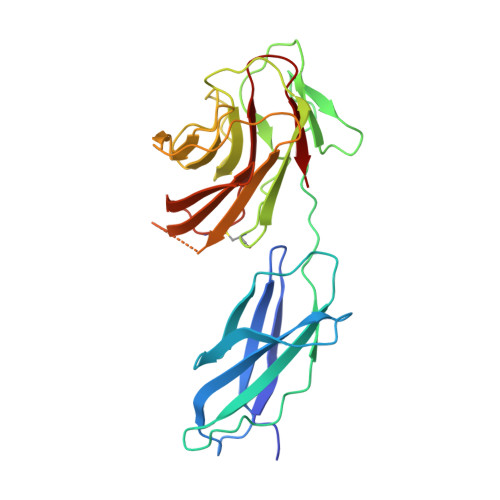CRLF3 plays a key role in the final stage of platelet genesis and is a potential therapeutic target for thrombocythemia.
Bennett, C., Lawrence, M., Guerrero, J.A., Stritt, S., Waller, A.K., Yan, Y., Mifsud, R.W., Ballester-Beltran, J., Baig, A., Mueller, A., Mayer, L., Warland, J., Penkett, C.J., Akbari, P., Moreau, T., Evans, A.L., Mookerjee, S., Hoffman, G.J., Saeb-Parsy, K., Adams, D.J., Couzens, A.L., Bender, M., Erber, W.N., Nieswandt, B., Read, R.J., Ghevaert, C.(2022) Blood 139: 2227-2239
- PubMed: 35051265
- DOI: https://doi.org/10.1182/blood.2021013113
- Primary Citation of Related Structures:
6RPX, 6RPY, 6RPZ - PubMed Abstract:
The process of platelet production has so far been understood to be a 2-stage process: megakaryocyte maturation from hematopoietic stem cells followed by proplatelet formation, with each phase regulating the peripheral blood platelet count. Proplatelet formation releases into the bloodstream beads-on-a-string preplatelets, which undergo fission into mature platelets. For the first time, we show that preplatelet maturation is a third, tightly regulated, critical process akin to cytokinesis that regulates platelet count. We show that deficiency in cytokine receptor-like factor 3 (CRLF3) in mice leads to an isolated and sustained 25% to 48% reduction in the platelet count without any effect on other blood cell lineages. We show that Crlf3-/- preplatelets have increased microtubule stability, possibly because of increased microtubule glutamylation via the interaction of CRLF3 with key members of the Hippo pathway. Using a mouse model of JAK2 V617F essential thrombocythemia, we show that a lack of CRLF3 leads to long-term lineage-specific normalization of the platelet count. We thereby postulate that targeting CRLF3 has therapeutic potential for treatment of thrombocythemia.
Organizational Affiliation:
Department of Haematology, Cambridge Blood Centre, National Health Service Blood and Transplant, University of Cambridge, Cambridge, United Kingdom.














